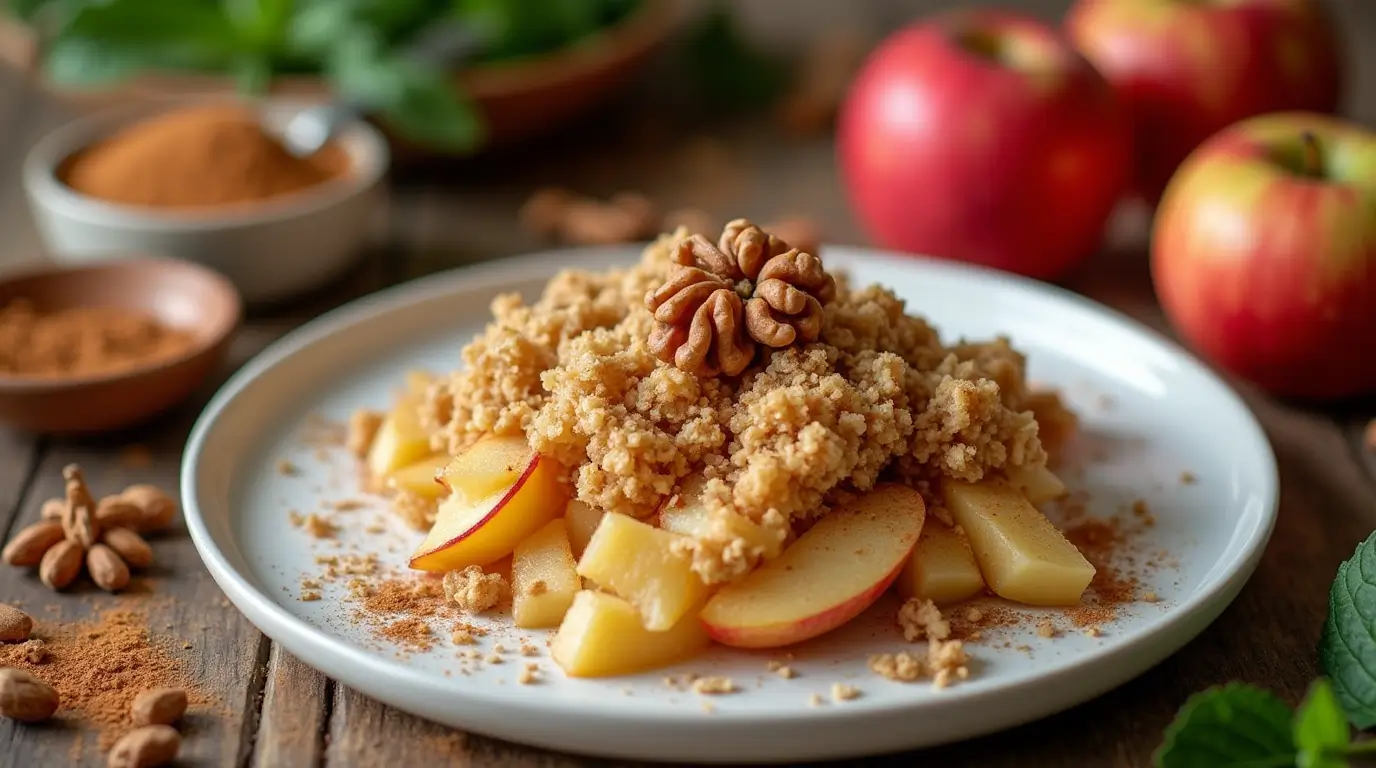Diabetic apple crisp offers a perfect blend of sweet, tender apples and a crisp, crunchy topping, all while keeping blood sugar levels in check. By substituting traditional sugar with healthier alternatives like stevia or monk fruit, this dessert is a guilt-free indulgence.
If you have diabetes or want a healthier snack, diabetic apple crisp is a great choice. It offers a good mix of taste and nutrition. You should try it for any occasion. Enjoy the comforting warmth of this wholesome dessert without the worry.
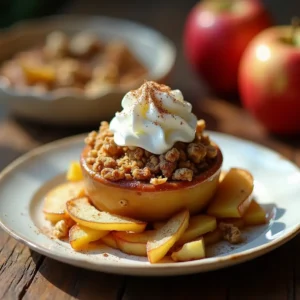
Low-Sugar Diabetic Apple Crisp You’ll Love
Ingredients
- 4 medium Low-GI apples
- 1 tbsp Lemon juice
- ½ cup Rolled oats
- ¼ cup Almond flour
- ¼ cup Chopped walnuts or pecans
- ¼ cup Erythritol or stevia
- 1 tsp Ground cinnamon
- ¼ tsp Ground nutmeg
- ¼ tsp Salt
- 3 tbsp Melted unsalted butter or coconut oil
- 1 tsp Vanilla extract
Instructions
1. Preheat and Prepare the Apples
- Preheat your oven to 350°F (175°C).
- Peel and slice the apples thinly. Toss them in a bowl with lemon juice to prevent browning and add tartness.
- Spread the apple slices evenly in a glass baking dish.
2. Create the Crumble Topping
- In a mixing bowl, combine oats, almond flour, chopped nuts, erythritol or stevia, cinnamon, nutmeg, and salt.
- Add melted butter and vanilla extract to the dry ingredients, stirring until the mixture becomes crumbly.
3. Assemble and Bake
- Sprinkle the crumble topping evenly over the apples and press gently to adhere.
- Bake for 35–40 minutes, or until the topping is golden brown and crisp.
4. Cool and Serve
- Allow the apple crisp to cool slightly. Serve warm, optionally with sugar-free whipped cream or low-sugar vanilla ice cream.
Video
Notes
- Best Apples for This Recipe: Use Granny Smith apples for their tartness and low sugar content, or mix with Fuji or Gala for natural sweetness and complexity.
- Sugar Substitutes: Experiment with erythritol, stevia, or monk fruit sweetener to find the one that best suits your taste.
- Serving Suggestions: Serve warm with a dollop of sugar-free whipped cream or a scoop of low-sugar vanilla ice cream.
Understanding Diabetes and Desserts
Diabetes affects how your body processes sugar. Enjoying desserts can become a challenge, as traditional recipes often contain high sugar levels. But it doesn’t mean giving up on sweets entirely. Instead, it’s about making smarter choices that cater to your health needs.
Low-sugar desserts fit into a diabetes-friendly lifestyle. They help in keeping your blood glucose levels stable. It’s about moderation and ingredient choices. These desserts allow you to satisfy your cravings without negative impacts.
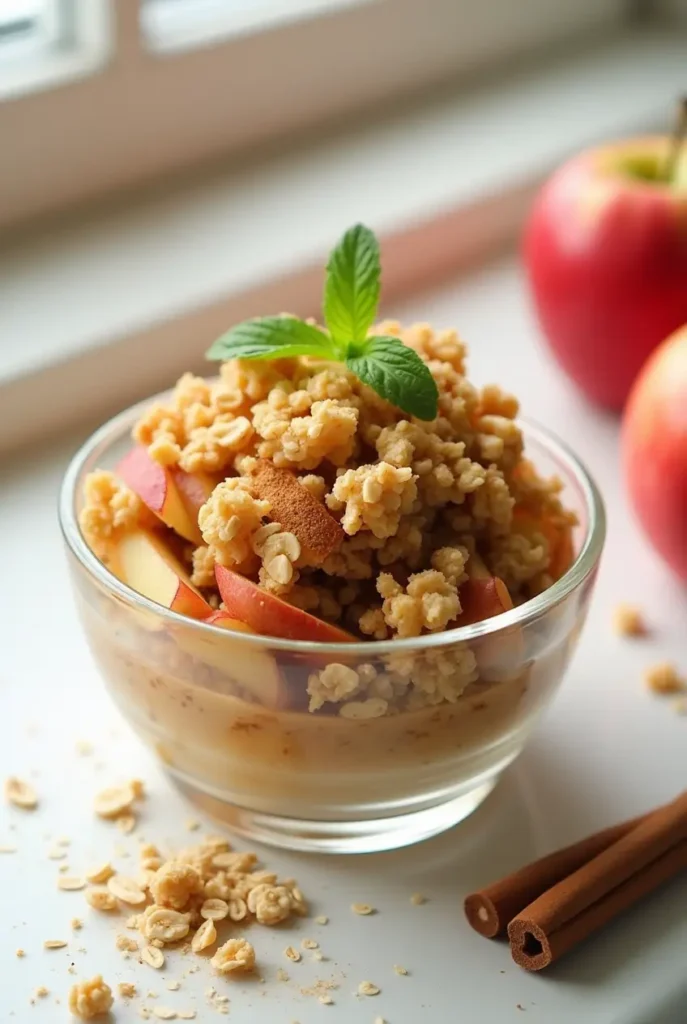
The Benefits of Diabetic-Friendly Desserts
- Lower in sugar and carbs
- Help manage blood sugar
- Satisfy sweet cravings
Creating diabetic-friendly desserts involves some creativity. You need to play with ingredient combinations and techniques. It’s an opportunity to discover new flavors while keeping your health in check.
Selecting quality ingredients is key. Each choice impacts the final product’s taste and nutritional profile. Opt for ingredients that provide natural sweetness without the sugar spike.
Portion control is crucial. Even low-sugar desserts can affect blood sugar if consumed in large amounts. Paying attention to the serving size allows you to indulge sensibly.
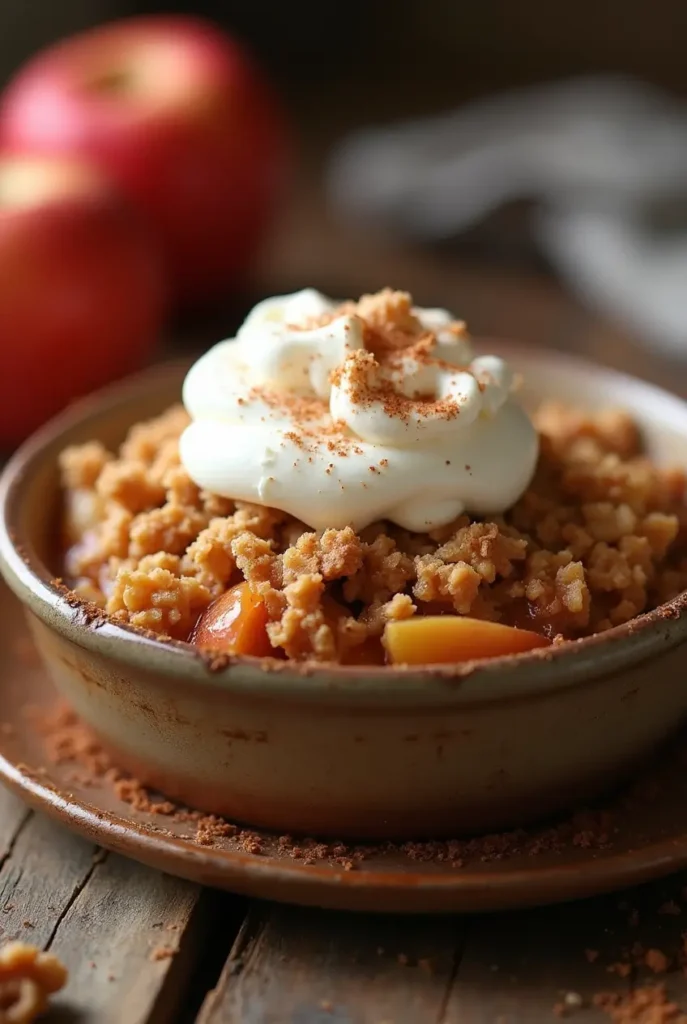
The Importance of Low-Sugar Options
Managing sugar intake is essential for those with diabetes. Consuming high amounts can lead to blood sugar spikes. Low-sugar options provide a safer way to enjoy sweets.
These desserts use natural sweeteners or sugar substitutes. They offer sweetness without the high glycemic index. This means they don’t raise blood sugar levels as much as regular sugar.
Choosing low-sugar options doesn’t compromise taste. With the right ingredients, you can still enjoy the full flavors of your favorite treats. It’s all about finding a balance between health and enjoyment.
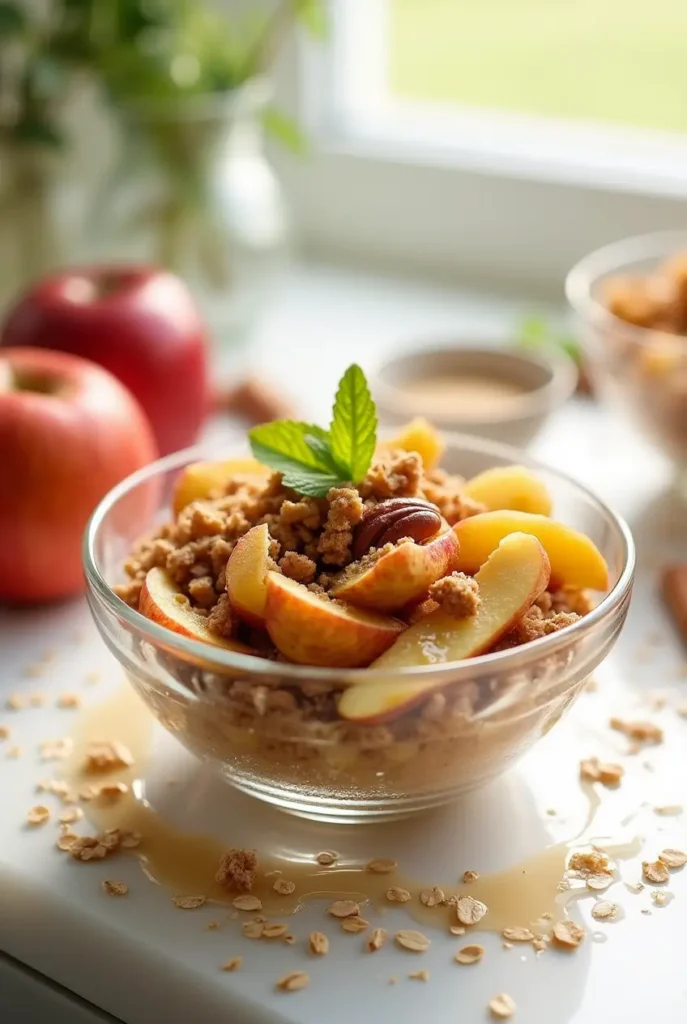
Best Practices for Diabetic-Friendly Baking
When baking for diabetes, consider all ingredients carefully. Start by selecting fruits with lower glycemic indexes. Apples are a great choice due to their fiber content and natural sweetness.
Incorporate spices like cinnamon to enhance flavor. They can also help in reducing sugar content naturally. Spices bring out sweetness, allowing you to use less sugar or substitute it.
Choose the right sugar substitutes. Stevia, erythritol, and monk fruit are popular options.
Test these substitutes to find which best suits your taste. Always measure carefully to achieve the desired sweetness level. By following these practices, diabetic baking can be satisfying and healthy.
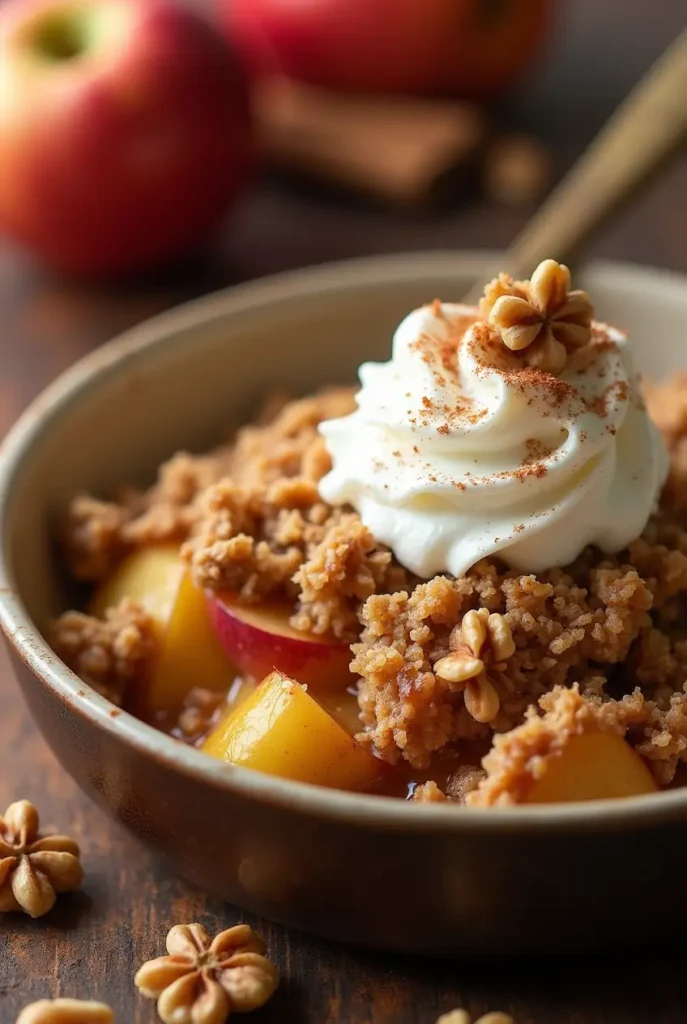
Selecting the Right Ingredients
Selecting the right ingredients is crucial for a diabetic-friendly apple crisp. Quality ingredients create both flavor and nutritional balance. Start by choosing apples with low glycemic indexes. They contribute to a lower spike in blood sugar.
Natural sweeteners and sugar substitutes are important. They offer sweetness without impacting health negatively. Experiment with different options to suit your tastes and dietary needs.
Incorporate whole grains and fiber-rich ingredients. Oats and nuts are great choices. They add texture and nutrition to your apple crisp.
Consider using spices. Cinnamon, nutmeg, and vanilla add depth and enhance natural sweetness. They allow you to reduce added sugars and balance flavors.
Here’s a quick list of must-have ingredients:
- Low-glycemic apples
- Sugar substitutes like stevia or erythritol
- Whole oats and nuts
- Spices: cinnamon, nutmeg, vanilla
- Lemon juice for tartness
Selecting these ingredients helps create a dessert that’s both delicious and healthy. This way, you can enjoy apple crisp without the guilt.
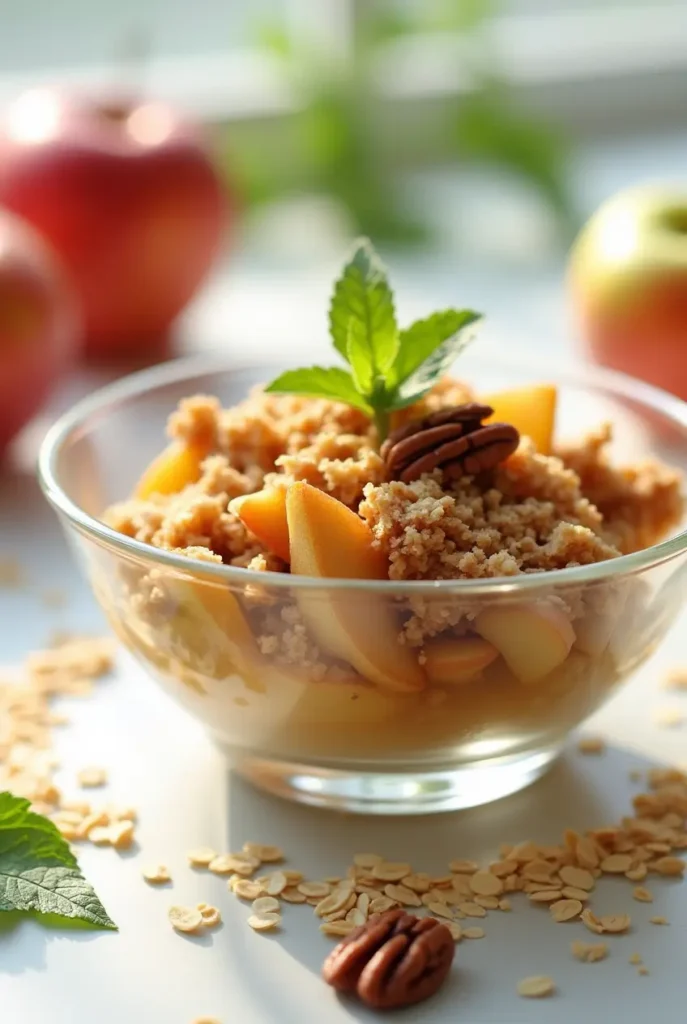
Best Apples for Diabetic Desserts
Choosing the right apple variety is the first step. Some apples suit diabetic desserts better than others. Generally, opt for apples that are lower on the glycemic index (GI).
Granny Smith apples are a popular choice. They have a tart flavor and low sugar content, making them ideal. Their crisp texture holds well during baking, adding perfect crunch.
Fuji and Gala apples can be alternatives. These apples strike a balance between sweetness and texture. Remember, the goal is to enjoy flavor without the sugar spike.
Combining different apple varieties works well, too. You get a complex flavor profile and balanced sweetness. The right apple choice enhances your apple crisp’s taste and health benefits.
Sugar Substitutes for Baking Apple Crisp
Choosing the right sugar substitute makes all the difference. It’s about finding one that enhances your dessert without raising blood sugar. Today, there are plenty of substitutes to try.
Stevia is popular due to its zero-calorie nature. It’s natural and doesn’t impact your blood sugar levels much. Monk fruit sweetener is another excellent option. It has antioxidants and adds a mild sweetness.
Erythritol is a sugar alcohol with almost no calories. It mimics the texture of sugar well in baking.
Each substitute has its unique taste and sweetness level. Experiment with these alternatives in your apple crisp to discover what you like best. Always start with small amounts to adjust the sweetness gradually.
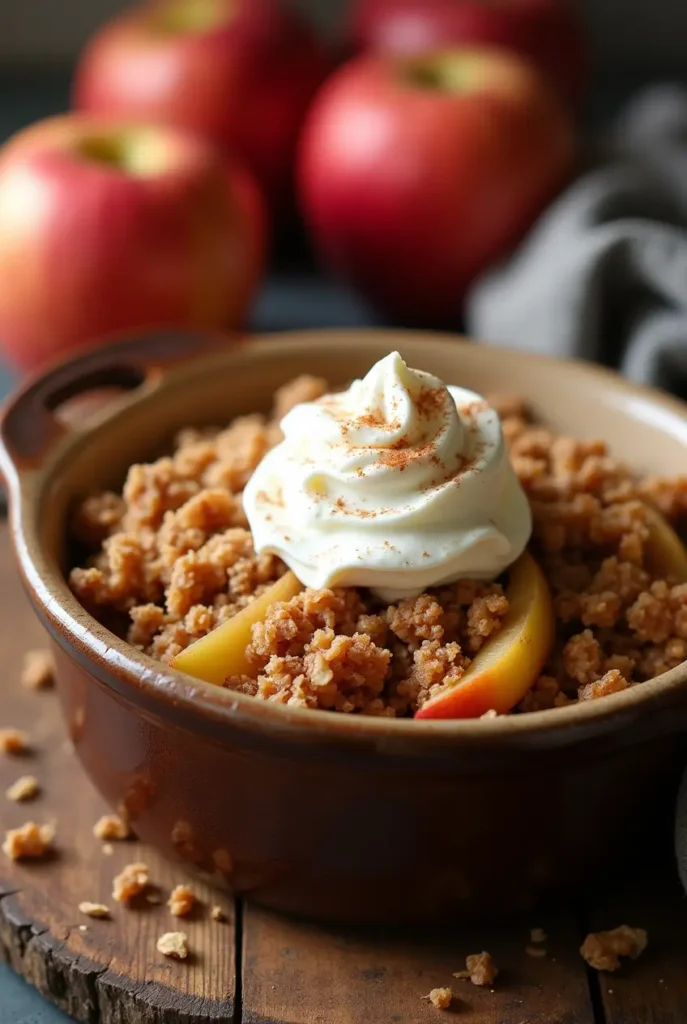
The Recipe: Easy Diabetic Apple Crisp
Creating a delicious apple crisp suitable for diabetics is simple. With a focus on the right ingredients, you can enjoy this treat guilt-free. This recipe is both easy to follow and satisfying to your taste buds. Let’s get started!
Ingredients
To begin, gather these ingredients, focusing on diabetic-friendly options:
- 4 medium-sized, low-GI apples (like Granny Smith)
- 1 tablespoon lemon juice
- 1/2 cup rolled oats
- 1/4 cup almond flour
- 1/4 cup chopped walnuts or pecans
- 1/4 cup erythritol or stevia
- 1 teaspoon ground cinnamon
- 1/4 teaspoon ground nutmeg
- 1/4 teaspoon salt
- 3 tablespoons melted unsalted butter or coconut oil
- 1 teaspoon vanilla extract
Instructions
Start by preheating your oven to 350°F (175°C). A well-preheated oven ensures even cooking and a perfect crisp topping.
Next, peel and slice the apples thinly. Toss them in a bowl with lemon juice to prevent browning and add a slight tartness.
Once prepared, spread the apple slices evenly in a glass baking dish. This ensures even cooking and allows the flavors to meld beautifully.
In a separate bowl, combine the oats, almond flour, walnuts, erythritol, cinnamon, nutmeg, and salt. Stir well to blend the flavors and textures.
Pour melted butter into the dry mixture. Add vanilla extract and stir until you incorporate everything well. This will form a crumbly topping.
Sprinkle the crumble mix evenly over the apples. Press gently to adhere the topping to the apples, enhancing the texture upon baking.
Bake for 35–40 minutes or until the topping is golden brown and crisp. Allow it to cool slightly before serving to let the flavors set.
With these simple steps, you have a delightful, low-sugar apple crisp. Enjoy it warm, perhaps with a dollop of low-sugar whipped cream for an added treat.
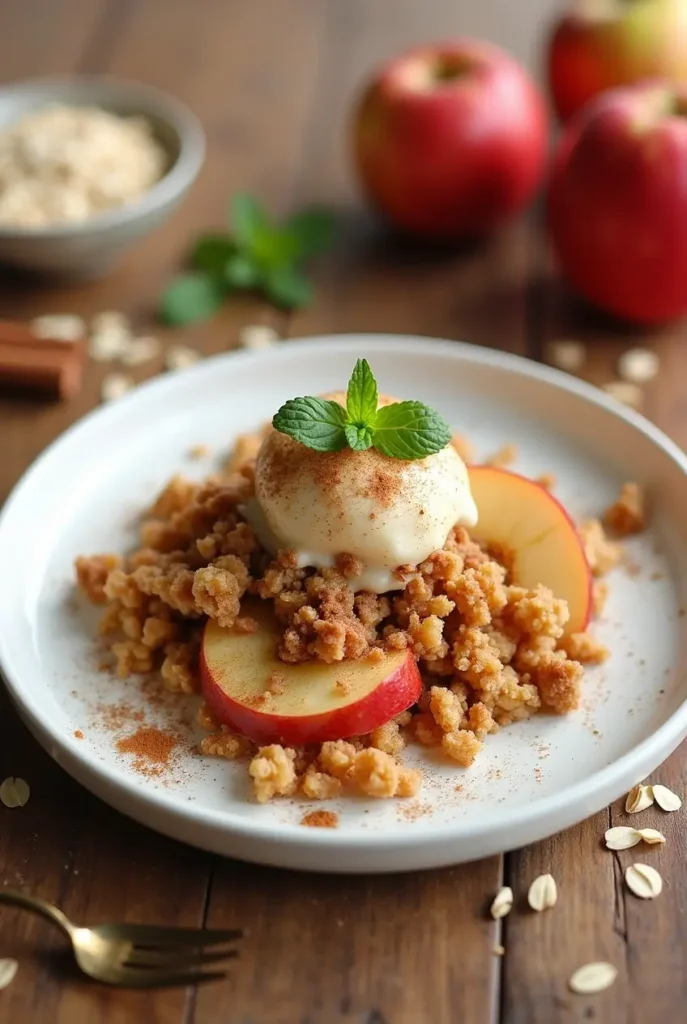
Balancing Flavor and Health
Crafting a dessert that aligns with health goals can seem challenging. However, balancing flavor and nutrition is achievable with thoughtful choices. By opting for ingredients that both satisfy and nourish, you can maintain this balance.
Incorporating spices like cinnamon and nutmeg adds depth and natural sweetness. These spices enhance flavor without the need for added sugar. They also bring antioxidant properties to your dessert.
Choosing nuts and oats in the topping not only provides texture but also boosts the nutritional profile. These components add healthy fats and fiber, essential for satiety. The result is a fulfilling, tasty dessert experience.
Portion control is another crucial element when enjoying desserts. Serving small amounts helps in managing blood sugar levels while still indulging a sweet tooth. With these strategies, balancing flavor with health becomes a delightful experience.
Enhancing Sweetness Naturally
Natural sweetness in desserts doesn’t have to rely on sugar. Using ripe apples brings inherent sweetness to apple crisp. Opt for varieties like Gala or Fuji for more natural sugars.
Spices like cinnamon play a vital role in creating a sweet illusion. They trick your taste buds into perceiving greater sweetness than actually present. This technique is effective for maintaining a low-sugar profile.
Additionally, including a hint of vanilla extract can deepen the flavor profile. It adds a sense of sweet richness, enhancing the overall taste experience without needing sugar. These methods ensure a satisfying dessert that aligns with health needs.
Nutritional Benefits of Ingredients
Selecting ingredients rich in nutrients enriches your dessert beyond taste. Apples, the star of this dish, contain dietary fiber essential for digestive health. They also offer vitamins and antioxidants beneficial for overall well-being.
Nuts such as walnuts introduce healthy fats crucial for heart health. They provide protein, making the dessert more satisfying and preventing overeating. Including these in your topping enriches the dessert’s nutritional value.
Oats are another powerhouse ingredient in the apple crisp. They bring a significant amount of fiber, which assists with blood sugar management. Together, these ingredients contribute to a dessert that supports your dietary goals while still being utterly delicious.
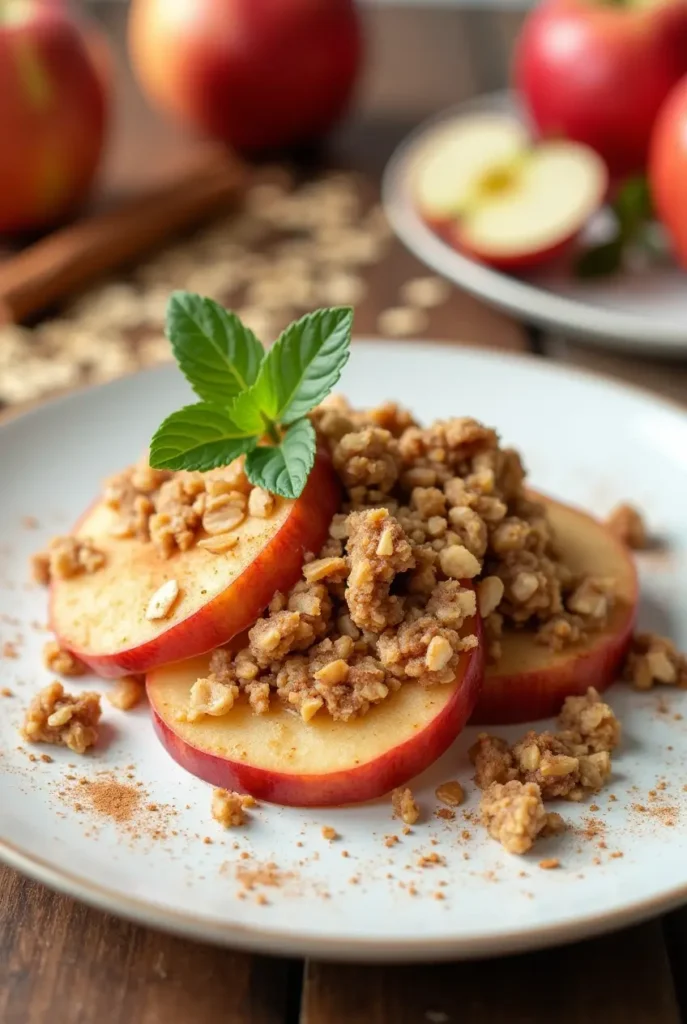
Diabetic Dessert Ideas Beyond Apple Crisp
Exploring desserts beyond apple crisp can diversify your diabetic-friendly meal options. There are countless ways to enjoy sweets without compromising your health goals. Embrace creativity to discover recipes that delight your taste buds while managing sugar levels.
Consider desserts that incorporate seasonal fruits, which naturally contain less sugar. These options can provide freshness and variety throughout the year. By using fruits with a lower glycemic index, you ensure dessert options that are both flavorful and safe.
Here are some delicious ideas to try:
- Berry parfaits with sugar-free yogurt.
- Chia seed pudding with almond milk and cinnamon.
- Baked pears with nuts and a sprinkle of nutmeg.
- Chocolate avocado mousse sweetened with stevia.
- Almond flour muffins with blueberries.
Experimenting with different bases and flavors can lead to exciting new creations. These diabetic-friendly baking recipes empower you to relish your sweet moments healthily.
Creative Variations and Serving Suggestions
When it comes to serving apple crisp, a few creative tweaks can elevate the experience. Try topping your crisp with a dollop of sugar-free whipped cream or a scoop of low-sugar vanilla ice cream. This adds a creamy contrast to the warmth of the crisp.
For a fresh twist, consider incorporating different fruits. Adding a handful of berries or slices of pear can introduce new flavors and textures. This simple variation keeps the dessert exciting and nutrient-rich.
Serving in individual ramekins can make the presentation more elegant and control portion sizes. Personal servings prevent overindulgence and offer a simple yet sophisticated touch to your dessert offerings.
Storing and Reheating Tips
Proper storage ensures your apple crisp remains fresh and delicious. Once cooled, cover the dish with a lid or wrap tightly with foil. It keeps well in the refrigerator for up to three days, maintaining quality and taste.
When reheating, opt for an oven instead of a microwave. Preheat to 350°F and warm the crisp for about 15 minutes. This method revives the crisp topping, ensuring it remains golden and crunchy.
For longer storage, consider freezing individual portions. Wrap them in a freezer-safe container, perfect for a quick dessert solution. When ready to enjoy, thaw in the refrigerator, then reheat following oven instructions.
Conclusion: Enjoying Desserts While Managing Diabetes
Savoring sweets with mindful choices is possible and rewarding. Diabetic-friendly recipes like apple crisp allow enjoyment without excess sugar and carbs. It’s about finding the right balance between taste and health.
Desserts can be part of a balanced diet with careful planning. Incorporating low-sugar options ensures indulgence without guilt. Making informed choices supports both your health and your palate.
Embracing a Balanced Lifestyle
A balanced lifestyle embraces moderation and diversity in food choices. By integrating low-sugar desserts, you maintain dietary restrictions without feeling deprived. This approach ensures you savor treats without significant impact on blood sugar levels.
Focusing on nutrient-rich foods while allowing occasional sweets supports overall wellness. A healthy balance in your diet promotes sustained energy and satisfaction, encouraging better diabetes management.
Encouraging Community and Sharing
Sharing recipes fosters a supportive community. Engaging with others who understand diabetic needs provides encouragement and inspiration. Swapping ideas and experiences helps create a repertoire of tasty, safe sweets.
Communities offer the chance to spread awareness of diabetic-friendly options. By sharing successes, you inspire others to embrace a healthier dessert journey. Together, we can enjoy life’s sweet moments safely and deliciously.
Nutritional Information and Recipe Notes
Diabetic apple crisp balances flavor and nutrition. Each serving contains fewer carbs and sugar than traditional versions, making it suitable for diabetics. Using natural sweeteners and nutritious toppings enhances its health benefits.
Remember to consider portion size. While this dessert supports dietary goals, moderation is key. Chefs choose each ingredient to provide great taste without excessive sugar, creating a satisfying and guilt-free treat.

